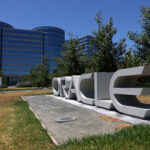Swiss Re struck a note of confidence on its pricing power and hiked its dividend, saying capital had recovered since it turned to U.S. billionaire Warren Buffett for help in the financial crisis.
The world’s second-biggest reinsurer’s full-year net income was the highest since 2007, but still missed forecasts as higher flood and storm claims and the repayment of a costly loan from Buffett-owned rival Berkshire Hathaway took their toll.
“The only fly in the ointment, in our opinion, is the absence of a buyback, which may disappoint some observers,” said Helvea analyst Tim Dawson.
Shares in Swiss Re were up 3.5 percent at CHF 57.95 [$60.94] at 1228 GMT, ahead of a 0.9 percent rise in the Stoxx 600 Europe insurance sector index.
The stock had already risen 11.3 percent this year, outperforming a 9.8 percent gain for bigger rival Munich Re and a 5.5 percent rise for Hannover Re, the world’s third-biggest reinsurer
“We spent two years getting our house in order. Now’s time for a fresh start,” said Chief Executive Stefan Lippe.
Full-year earnings were dragged down by an overall charge of $1.4 billion linked to early repayment of the Buffett loan and a currency adjustment.
Swiss Re said in November it would bring forward repayment of the convertible loan from Berkshire from early 2011, but had to pay full interest due, leading to a $1 billion charge in the fourth quarter.
On Thursday Swiss Re said it had raised some $4 billion in new capital in 2010, fully absorbing the impact of the Buffett loan repayment and leaving it with $10 billion more than it needed to regain the ‘AA’ credit rating it lost in the crisis.
Standard & Poor’s, which rates the company’s financial strength ‘A+’ with a positive outlook, said in October its capital was above that needed for the top ‘AAA’ rating, and was expected to remain so after repaying Buffett.
INSURANCE PRICES
The company would maintain dividends similar to the CHF 2.75 [$2.89]a share it plans to pay for 2010, said Chief Financial Officer George Quinn.
On premium trends Swiss Re said it began 2011 with very successful January renewals because of increased demand for tailored products from large clients and growth in insurance demand, particularly in high-growth markets like Asia.
“The broader market price has declined at renewal and we estimate by about 4 to 7 percent,” Quinn said. “In Swiss Re’s portfolio we saw a price decline, risk-adjusted, of about 2 percent; hence we think we’ve outperformed the market.”
Hannover Re has said reinsurance market prices declined in January renewals, supporting the view of brokers and analysts that reinsurers have seen a further erosion of the prices.
But Swiss Re forecast higher property and casualty market prices in 2012/2013.
“All the facts and figures show that this is not sustainable, the market has to turn,” said Lippe. “I’m an old crocodile; I’ve seen this film three times now.”
NEW TARGETS
The property and casualty combined ratio — costs and claims as a proportion of premium revenue — worsened to 93.9 percent from an extremely low 88.3 percent a year earlier, when unusually low payouts on natural catastrophes boosted profit.
Natural catastrophe claims were around $1.2 billion in 2010, compared with an expectation of around $900 million, Quinn said.
Swiss Re said it was targeting a combined ratio of 94 percent for 2011 and annual earnings per share (EPS) growth of 10 percent over five years.
It lowered its return on equity (ROE) target from 12 percent over the reinsurance cycle to approximately 11 percent, saying interest rates had stayed low for longer than initially anticipated, depressing investment returns.
“The new ROE and 10 percent EPS growth targets appear realistic and bode well,” said Vontobel analyst Stefan Schuermann.
(Editing by Will Waterman, Greg Mahlich)
Topics Trends Profit Loss Reinsurance
Was this article valuable?
Here are more articles you may enjoy.


 Billionaire Ellison Is Moving Oracle to Nashville From Texas
Billionaire Ellison Is Moving Oracle to Nashville From Texas  4,800 Claims Handled by Unlicensed Adjusters in Florida After Irma, Lawsuit Says
4,800 Claims Handled by Unlicensed Adjusters in Florida After Irma, Lawsuit Says  Cracks in O’Hare Columns Aren’t Insured Property Damage, Just Bad Product – Court
Cracks in O’Hare Columns Aren’t Insured Property Damage, Just Bad Product – Court  Worsening Weather Igniting $25 Billion Weather Derivatives Market
Worsening Weather Igniting $25 Billion Weather Derivatives Market 

